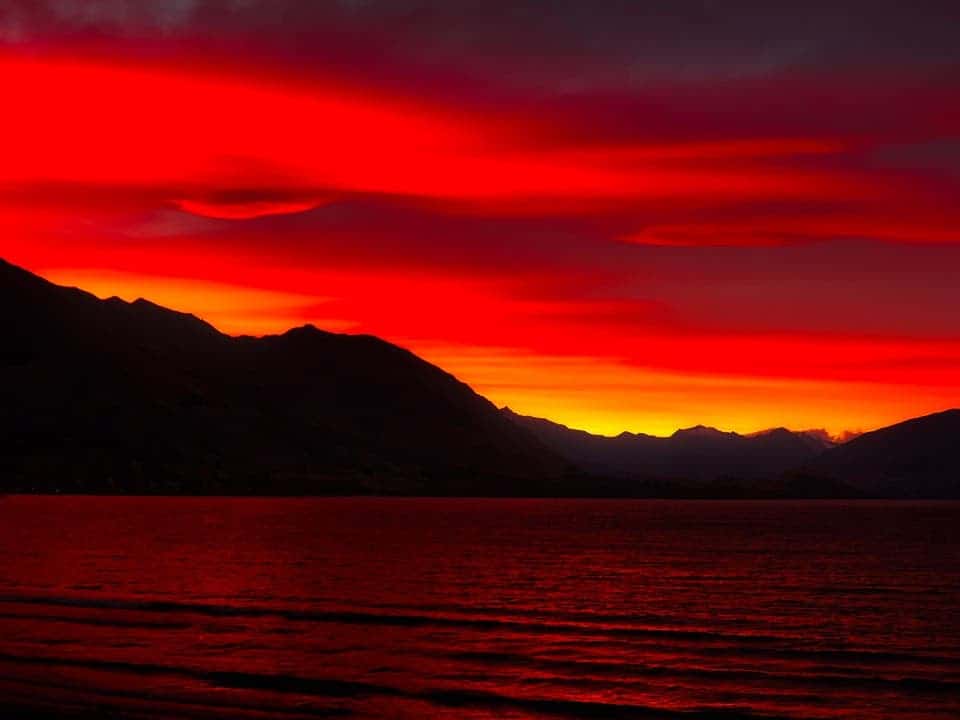Earth’s crust may have been formed in part by atmospheric chemicals which settled on the surface as the planet cooled, McGill University researchers report.
We know that about 4.5 billion years ago, a planetoid roughly the same size as today’s Mars slammed into early Earth with enough force to melt the whole thing into a ball of magma. The event was so violent that we believe it led to the formation of the Moon and altered the chemical composition of our planet into the iron-rich Earth we know and love today.
Conventional wisdom holds that following this impact, the Earth gradually cooled down and the outer surface of this ball of lava hardened into a crust — in other words, the rocks on the planet’s surface are igneous in origin. But Don Baker and Kassandra Sofonio, a team of earth scientists from McGill University, say that the event played a direct hand in forming the planet’s modern crust. According to their theory, some of the chemical components we see in the crust today were deposited from the super-heated atmosphere left in the wake of the impact.
Igngaseous
Largely speaking, Earth’s crust comes in two flavors: oceanic and continental. Oceanic crust is the stuff plates are formed of, the rocks that cool from magma at mid-ocean rifts (they are igneous) then get subducted and recycled on the other side of the plate. It’s usually pretty thin and it’s what the ocean floor rests on.
Continental crust is the stuff that we actually live on. These thicker slabs of rock form on top of oceanic crust and reach high enough altitudes (usually) to form continents above water — hence their name. The rocks that go into continental crust can come from many different places, but what’s important now is that more than 90% of these rocks are estimated to be formed from silica-rich minerals, such as feldspar and quartz. Which, as you may have guessed, adds up to a lot of silica.
So where did all this silica-rich crustal material come from? The duo says that the collision 4.5 billion years ago turned the atmosphere into high-temperature steam which dissolved the rocks in the surface into a gaseous solution.
“These dissolved minerals rose to the upper atmosphere and cooled off, and then these silicate materials that were dissolved at the surface would start to separate out and fall back to Earth in what we call a silicate rain,” Baker says.
To test their theory, the team recreated the conditions of early Earth in the lab. They used a mix of bulk silicate materials and water which was enclosed in gold palladium capsules, then heated to 727 degrees Celsius (1340 Fahrenheit) at 100 atm to simulate conditions in the atmosphere about 1 million years after the moon-forming impact.
Using previous work on rock-water interactions at high pressure as a starting point, the team successfully recreated a “surprisingly similar” material to the Earth’s modern crust. The authors believe that following the impact, surface silicate rocks would dissolve and separate, rising to the upper layers of the atmosphere. Here, they cooled off enough to crystallize and fall back to Earth in a “silicate rain.” Sofonio christened the process “aerial metasomatism.”
One surprising implication of the paper is that it could provide researchers with a better understanding of how to spot planets fit for human habitation, or even those that harbor alien life.
“This time in early Earth’s history is still really exciting,” he adds. “A lot of people think that life started very soon after these events that we’re talking about. This is setting up the stages for the Earth being ready to support life.”
The paper “A metasomatic mechanism for the formation of Earth’s earliest evolved crust” has been published in the journal Earth and Planetary Science Letters.










